Year-Ender: Top 10 Art Exhibits in China
In this special year, a large number of galleries and museums were forced to close. With the contagion being brought under control, more and more galleries and museums are reopening. While many museums have been putting exhibitions online, it seems that visitors still prefer to enjoy works of art in person. Here are 10 major art exhibitions that were held offline around China and drew huge public attention.
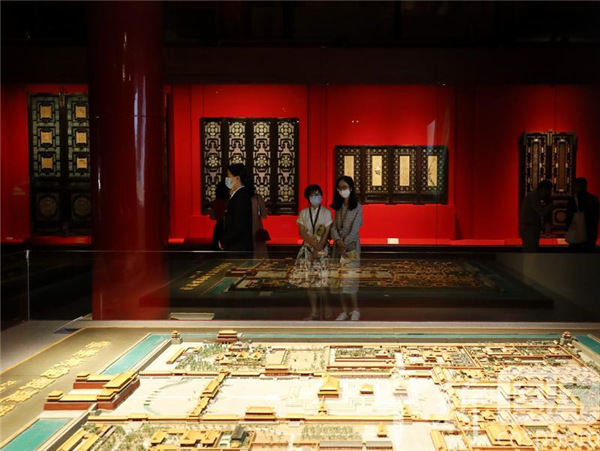
A special exhibition marking the 600th anniversary of the completion of the construction of the Forbidden City was held in Beijing late this year. [Photo by Jiang Dong/China Daily]
1. Celebrating Forbidden City's 600th birthday
The Palace Museum (Sept 10 - Nov 15)
The exhibition, Everlasting Splendor: Six Centuries at the Forbidden City, held in the Meridian Gate Galleries, marked the 600th anniversary of the completion of the construction of the compound, China's imperial palace, from 1420 to 1911. Twenty-four emperors lived in the Forbidden City during the Ming (1368 - 1644) and Qing (1644 - 1911) dynasties. Within its 720,000-square-meter area, there are 1,050 ancient buildings.
Over 400 cultural relics were displayed at the exhibition, reflecting the history of the Forbidden City's construction, the development of its layout, and how it has been protected and renovated in the past decades.
The Palace Museum was established in 1925. In 1987, the Forbidden City became a UNESCO World Heritage Site. The museum houses 1.86 million cultural relics and received over 19 million visitors in 2019.
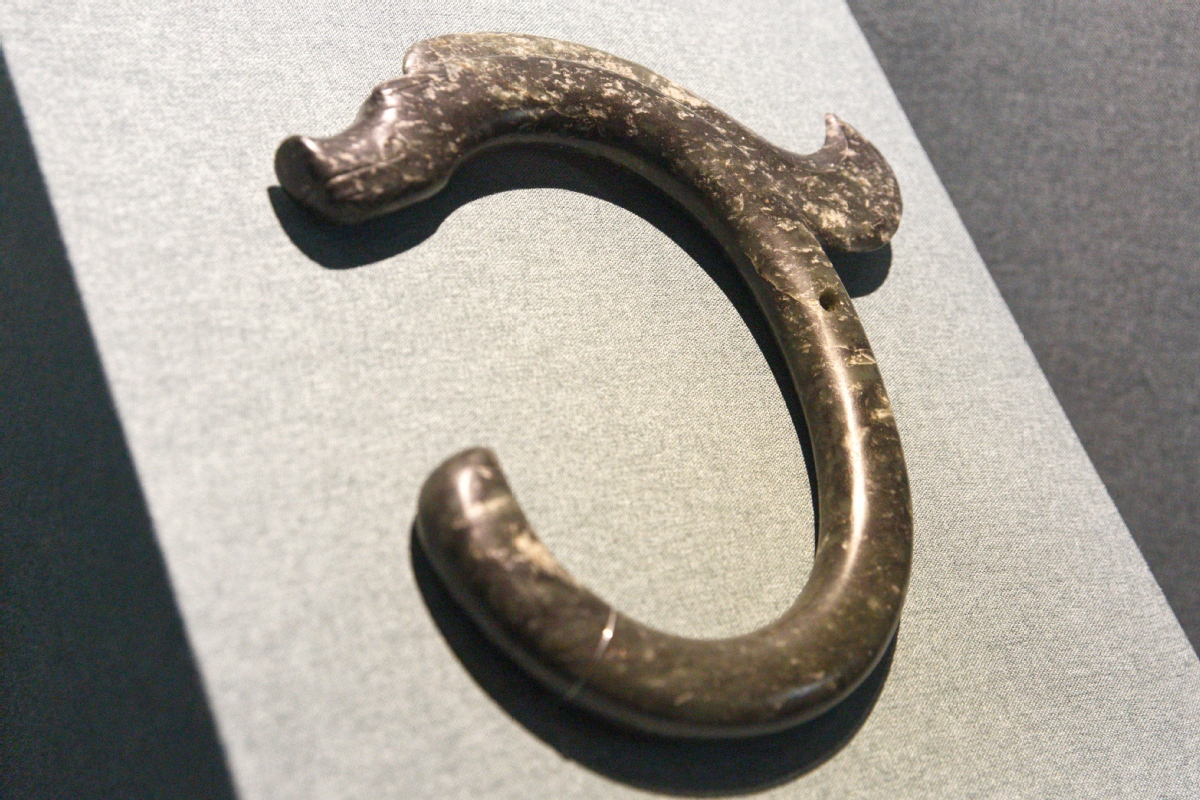
A dragon-shape jade object on show at the National Museum of China. [Photo by Jiang Dong/China Daily]
2. Prehistoric Jade objects trace origin of Chinese civilization
National Museum of China (Oct 30 - Jan 3)
When speaking about the Hongshan culture, which dates between 6,500 and 5,000 years ago, what most often comes to mind is the beauty of jade objects buried in the tombs of this Neolithic civilization.
Jade from Hongshan, an archaeology exhibition at the National Museum of China, showed more than 160 artifacts including jade and pottery objects, revealing early stirrings of Chinese civilization thousands of years ago.
The pieces help people today understand the social ranks, ceremonies and customs of the Hongshan culture, of which several sites have been found and are being excavated continuously in an area stretching from the Inner Mongolian autonomous region to Liaoning province in northern China.

Students look at one of the exhibits of Atop the Mountains: Exhibition of the Eight Great Masters of the Tang and the Song dynasties at the Liaoning Provincial Museum in Shenyang on Dec 2. [Photo by Li Hao/For China Daily]
3. Exhibit highlights eight great masters of Tang and Song dynasties
Liaoning Provincial Museum (Dec 2 - March 2)
This was China's first exhibition collectively introducing the "eight great masters" of the Tang (618 - 907) and Song (960 - 1279) dynasties-the cultural pinnacles of ancient China, through cultural relics that have been handed down as a result of about 1,000 years of continuous efforts.
In China, "the eight great masters" (video) is a household cultural term referring to Liu Zongyuan and Han Yu from the Tang Dynasty, plus Ouyang Xiu, Su Xun and his two sons Su Shi and Su Zhe, along with Wang Anshi and Zeng Gong, all from the Song Dynasty. The term hails their unparalleled status in Chinese arts and literature.
A total of 115 exhibits-mainly paintings, calligraphy, ancient books, stone rubbing pieces and ceramics-were displayed to recall the glorious era of outstanding literati. Eighty-four articles were from the museum's own collection, and the rest were on loan from key venues nationwide including the National Museum of China and the Shanghai Museum.
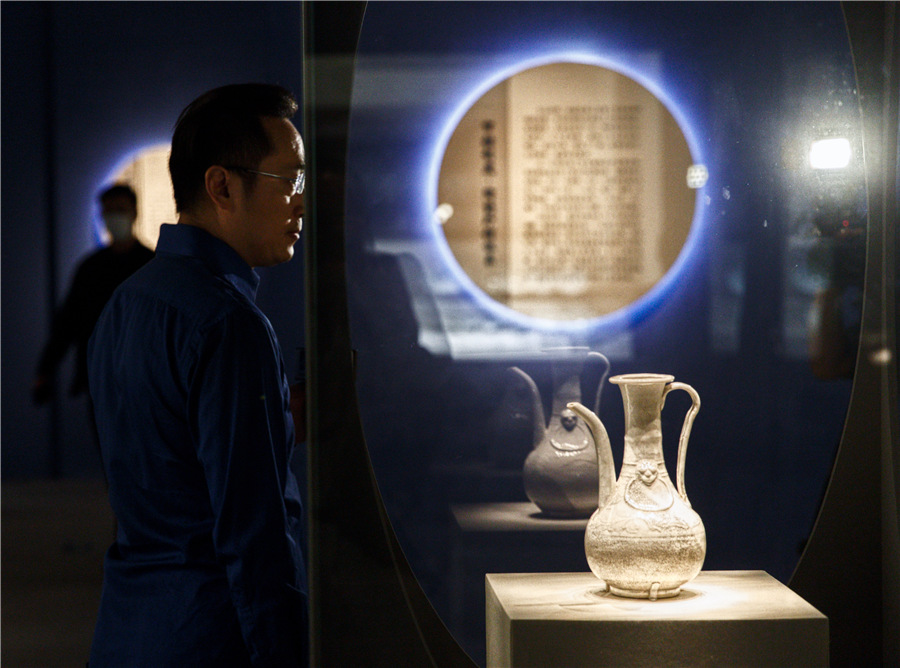
A Sail Over Miles, an exhibition staged at the National Museum of China in Beijing, displays over 300 ceramic relics, including a pot excavated from the wreckage of Nanhai No 1, a Chinese cargo ship dating back more than 800 years. [Photo by Jiang Dong/China Daily]
4. Reviewing ancient maritime trade in Chinese porcelain
National Museum of China (Sept 4 - Jan 29)
The exhibition, A Sail Over Miles, offered a brief review of the ancient Silk Road in ceramics. It navigated the manufacturing, export and shipping routes from the Tang Dynasty (618 - 907) to the Qing Dynasty (1644 - 1911) with over 300 ceramic relics, including a pot excavated from the wreckage of Nanhai No 1, a Chinese cargo ship dating back more than 800 years.
The exhibition also showed Japanese, Korean and British ceramics, reflecting the influence of China's porcelain-making techniques in local industries.
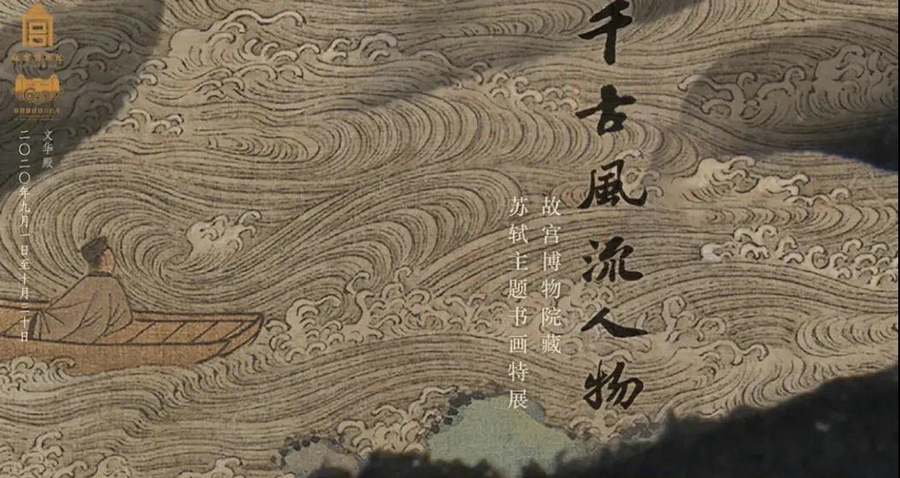
5. An iconic figure of classical Chinese arts and culture
The Palace Museum (Sept 1 - Oct 30)
The Palace Museum in Beijing hosted Man of Infinite Refinement: Special Exhibition on the Paintings and Calligraphy of Su Shi, a calligraphy and painting exhibition on the legacy of Su Shi (aka Su Dongpo), an iconic figure of ancient Chinese literature and fine arts. Su Shi (1037-1101), who lived during the Song Dynasty (960 - 1279), is a household name in China.
The 78 exhibits on display spanned from the Northern Song Dynasty through recent history and cover a range of media, including calligraphy, paintings, epigraphic rubbings, documents and rarely seen books.
They were either Su's representative works or pieces created by his close friends, predecessors and students that reflect their interactions, or works by his followers from later periods that pay homage to Su.

6. Monet's masterpieces descend on Shanghai
The Bund One Art Museum (Oct 8 - Jan 3)
One of the best-known artworks of all time, Claude Monet's oil painting Impression Sunrise is on display at the Bund One Art Museum in Shanghai until Jan 3, 2021.
Created in 1872, Impression Sunrise depicts the rapidly changing light and mist during sunrise at the port of Le Havre in France. The painting is one of the most treasured pieces of the Marmottan Monet Museum in Paris and is rarely exhibited abroad.
Named after the painting, the exhibition features 47 pieces of artwork, with nine original paintings by Monet, including two from the Charing Cross Bridge series, On the Beach at Trouville, Boats in the Harbor at Honfleur and Falaise et Porte d'Amont par Gros Temps.
Also on view are several Japanese prints that Monet and other featured artists drew inspiration from, as well as paintings by such modern artists as Vicky Colombet and Gerard Fromanger.
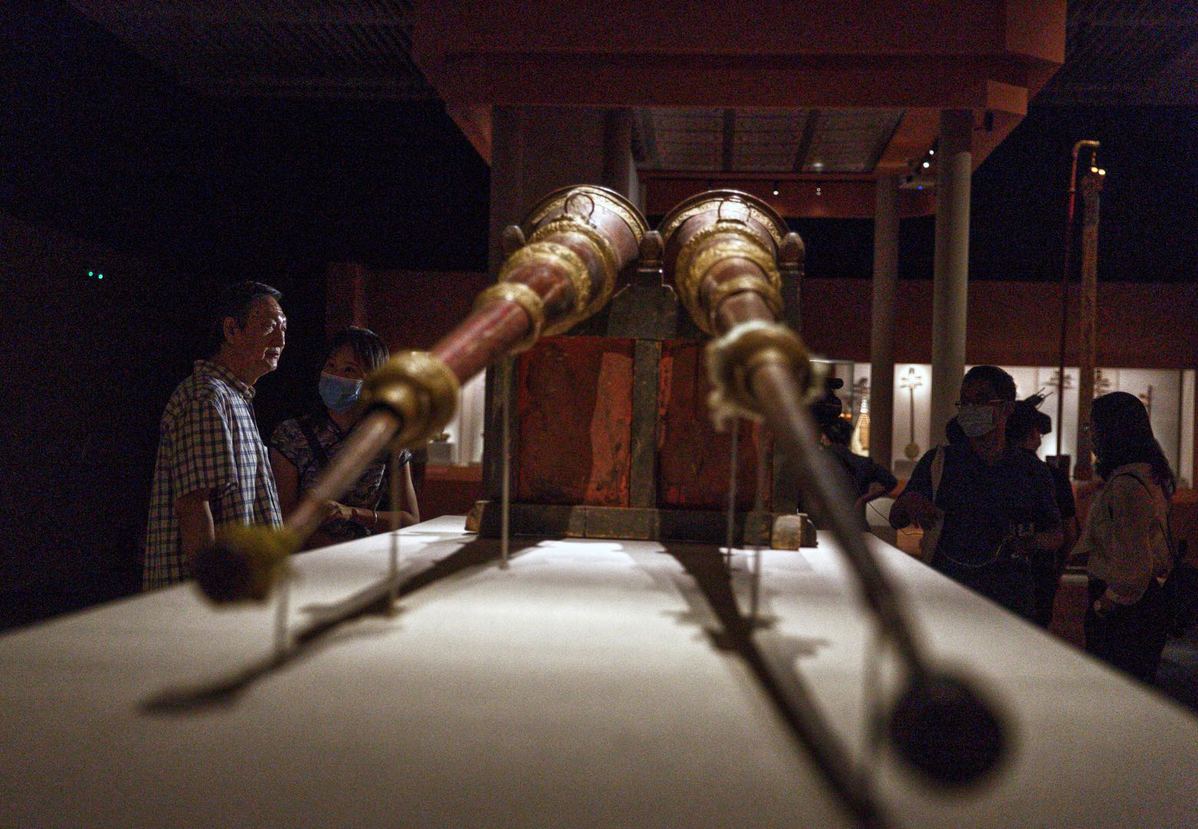
The Sound of Harmony, an exhibition held at the National Museum of China, examines the roles of music in state activities, public education and exchanges between ancient China and other civilizations. [Photo by Jiang Dong/China Daily]
7. Ancient instruments resound through centuries
The National Museum of China (Aug 8 - Jan 29)
Ranging from the Neolithic Jiahu bone flute, the Tang Dynasty (618 - 907) "Jiu Xiao Huan Pei" guqin (zither) to the Qing Dynasty (1644 - 1911) 12-tone pitch pipes, ancient China's various musical instruments continue to resonate with contemporary people.
It is widely believed these artifacts embody rich cultural information about the evolution of rituals and ceremonies in accordance with social hierarchies, arts and crafts developed by ethnic groups and collective beliefs about the universe and humanity that continue to unite Chinese thinking.
An ongoing exhibition,The Sound of Harmony, traces the development of Chinese musicology, folk art and culture. It displays over 200 items, mostly musical instruments, from the National Museum's collection and on loan from other cultural institutions, such as the Palace Museum and Shanghai Museum.
The exhibition also examines music's roles in state activities, public education and exchanges between ancient China and other civilizations.
8. From Rembrandt to Monet: 500 Years of European Painting
Guangdong Provincial Museum (Jan 10 - May 5 )
Hunan Provincial Museum (May 29 - Sept 13)
Chengdu Museum (Sept 29 - Jan 3)
For the first time in history, 60 carefully selected European masterworks from the Indianapolis Museum of Art's collection traveled to Chinese cities of Guangzhou, Changsha and Chengdu, in the exhibition, From Rembrandt to Monet: 500 Years of European Painting, in 2020.
The paintings were selected for their exceptional quality and for their ability to clearly convey the broader narrative of European art history, from the early Italian Renaissance through 19th-century French Impressionism.
The exhibition encompasses the most influential periods and schools of European art history. The most eye-catching showpieces include works by Titian, Rubens, Rembrandt, Goya, Gauguin and Monet, among others.
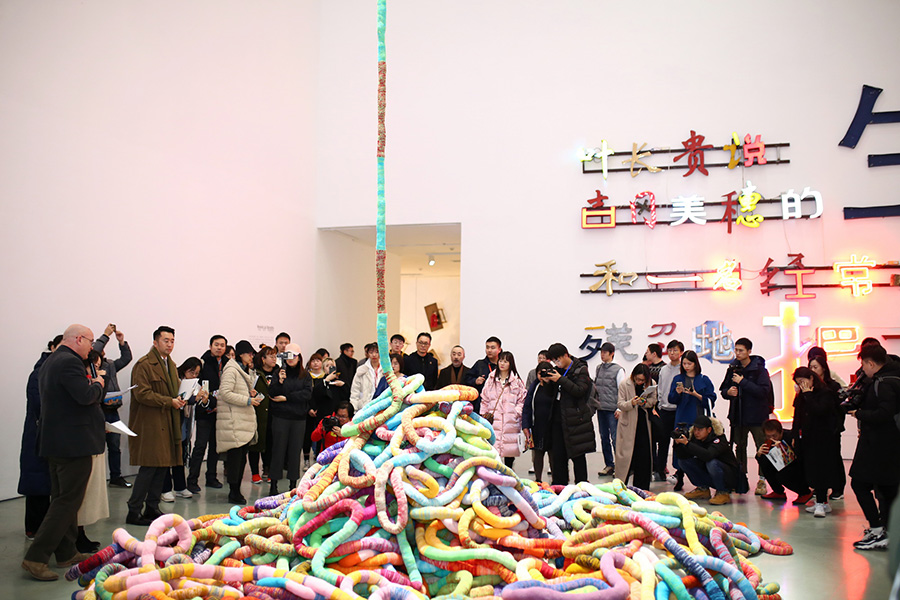
The fourth Today's Documents exhibition is themed on "a stitch in time" to address the complications of recent global social, political, economic and cultural changes. [Photo provided to China Daily]
9. Contemporary art show looks for 'a stitch in time'
Today Art Museum (Jan 13 - Jun 25)
Today's Documents, a major exhibition of international contemporary art, initiated in 2007 and held every three years by Beijing's Today Art Museum, has committed to presenting the experimental advances of Chinese art and also the evolution of global works.
This year, the fourth Today's Documents exhibition teams up 37 artists from across the world whose works tackle with topics such as the global imbalance of economic development, refugee crisis, terrorism, cyber attacks and environmental deterioration which are threatening human society.
The show aims to inspire visitors to join hands to "stitch up the fissures" in the world, according to the curators.
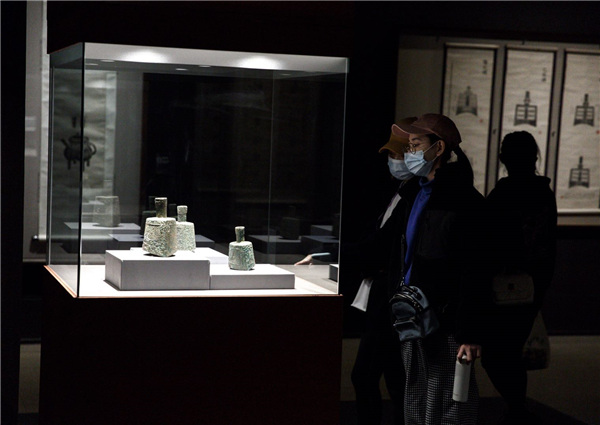
Scholar, connoisseur and collector of Chinese antiquities, Rong Geng (1894 - 1983), spent a lifetime accumulating artistic and cultural rarities and later donated all of them to the State. His former collection is on show at the National Art Museum of China in Beijing. The exhibition runs through Jan 3. [Photo by Jiang Dong/China Daily]
10. Honoring a scholar who made the largest donation of antiquities
National Art Museum of China (Oct 31 - Jan 3)
Rong Geng (1894 - 1983), a scholar of Chinese paleography, educator and connoisseur of antiquities, is little known to the general public. However, his extensive studies of ancient Chinese writings and his former collection of archaic oracle bones and bronzes continue to enrich people's cultural life.
Rong once said, "Knowledge should be shared and used by all people." In his lifetime, Rong donated to the State nearly 200 bronze objects ranging in age and variety, with the oldest dating back more than 2,000 years, all of which are now housed at numerous public museums and universities.
It is believed that, to this day, Rong's donation is still the largest made by any private collector of such antiquities to the country.
Rong also donated more than 1,000 classical Chinese ink paintings and calligraphy works, one of the largest submissions of ancient art on paper the country has received.
